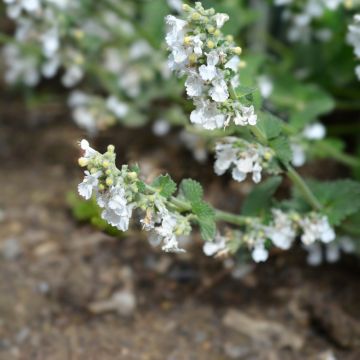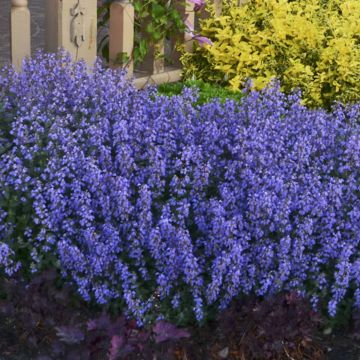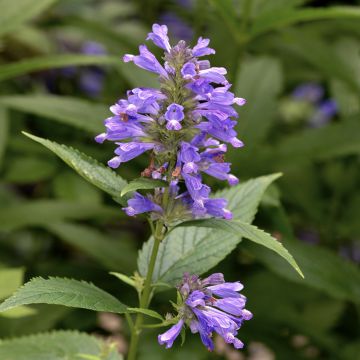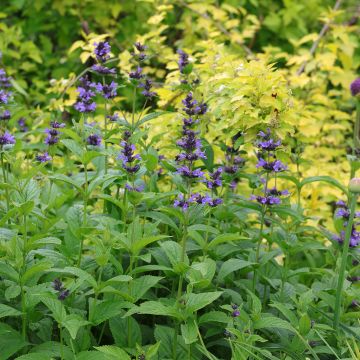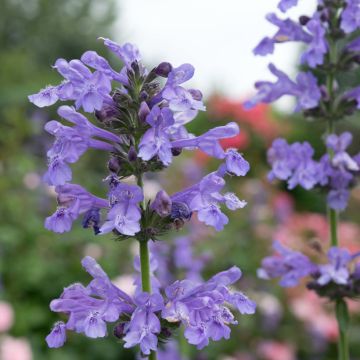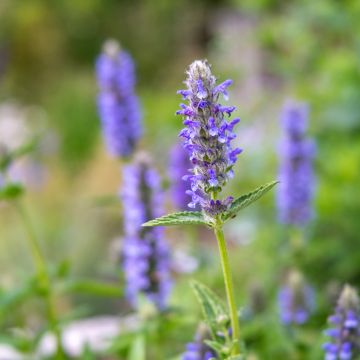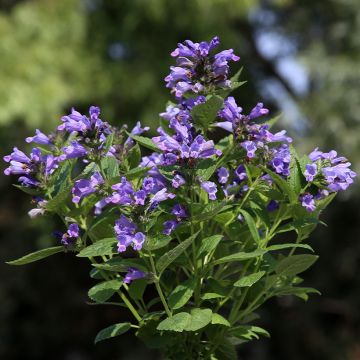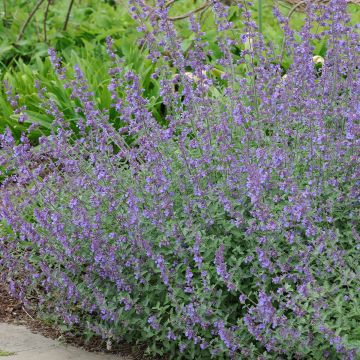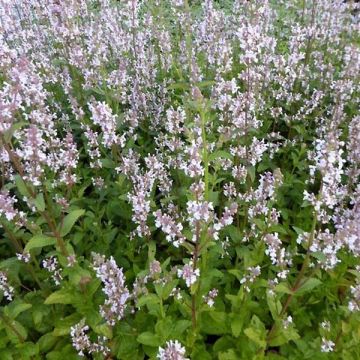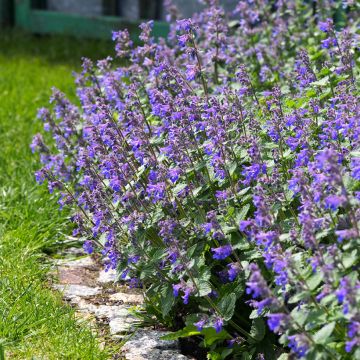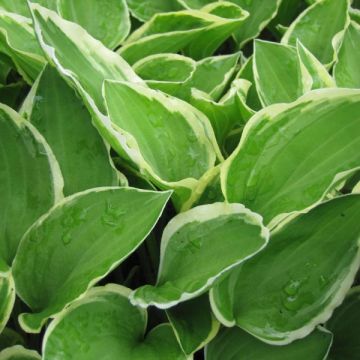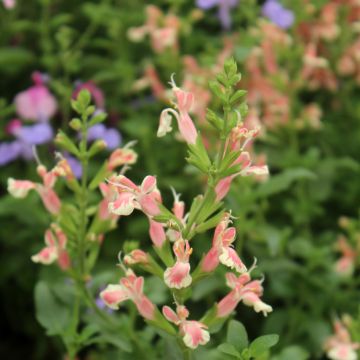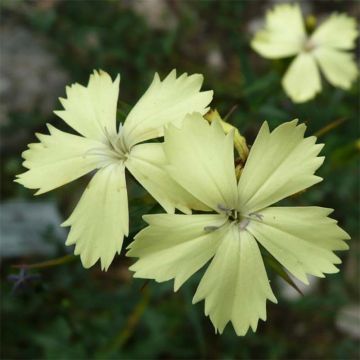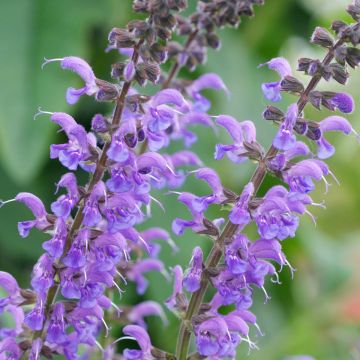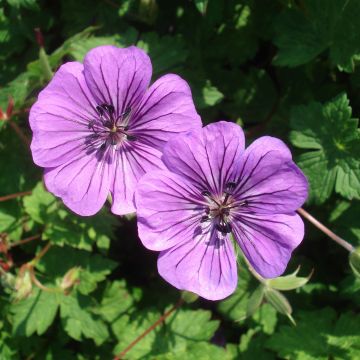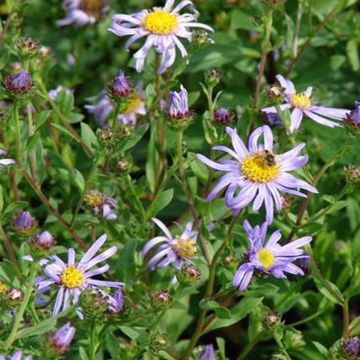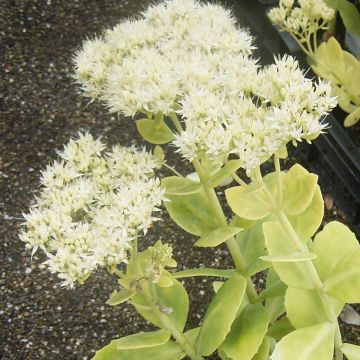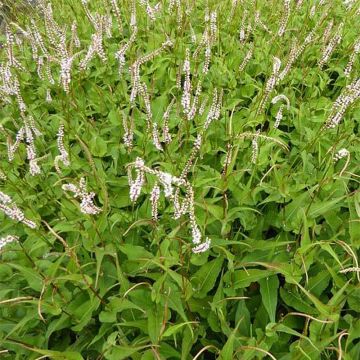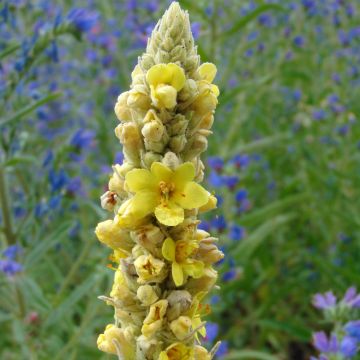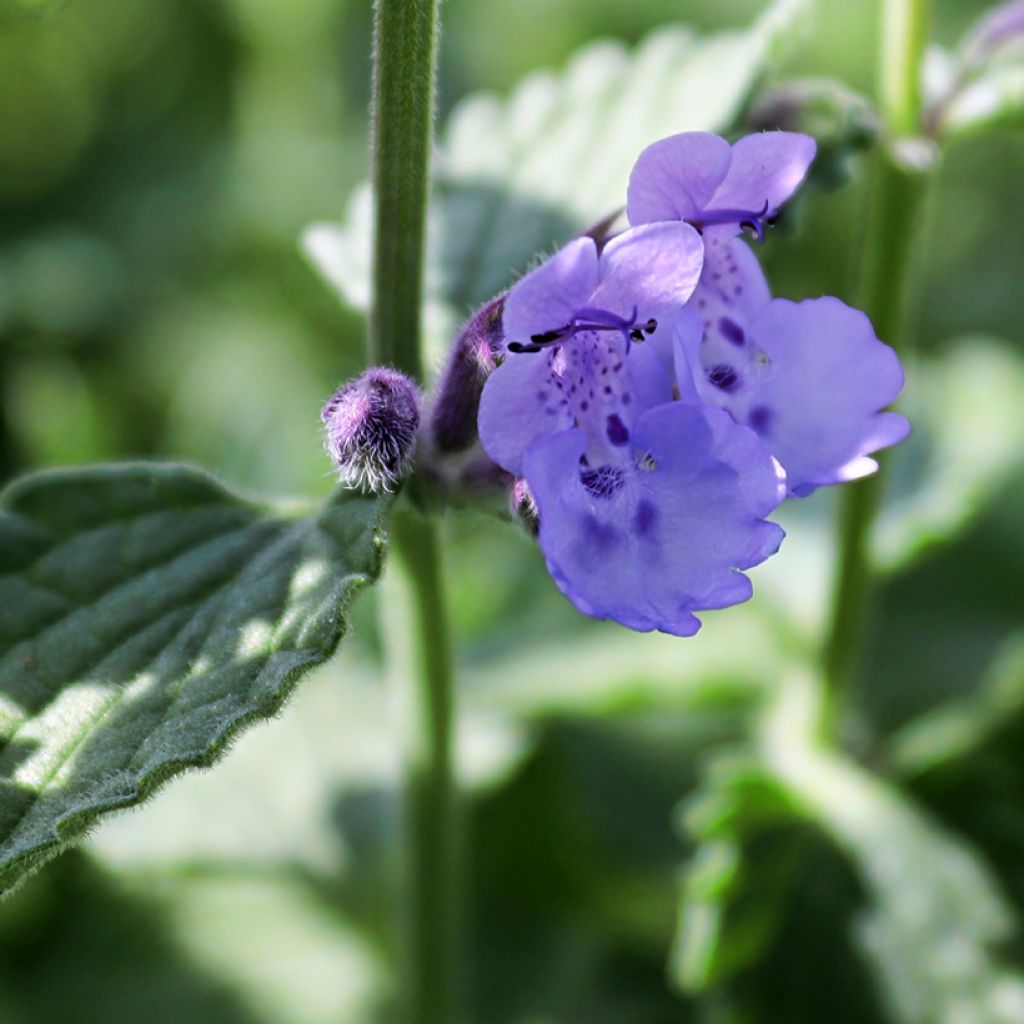

Nepeta mussini - Catnip
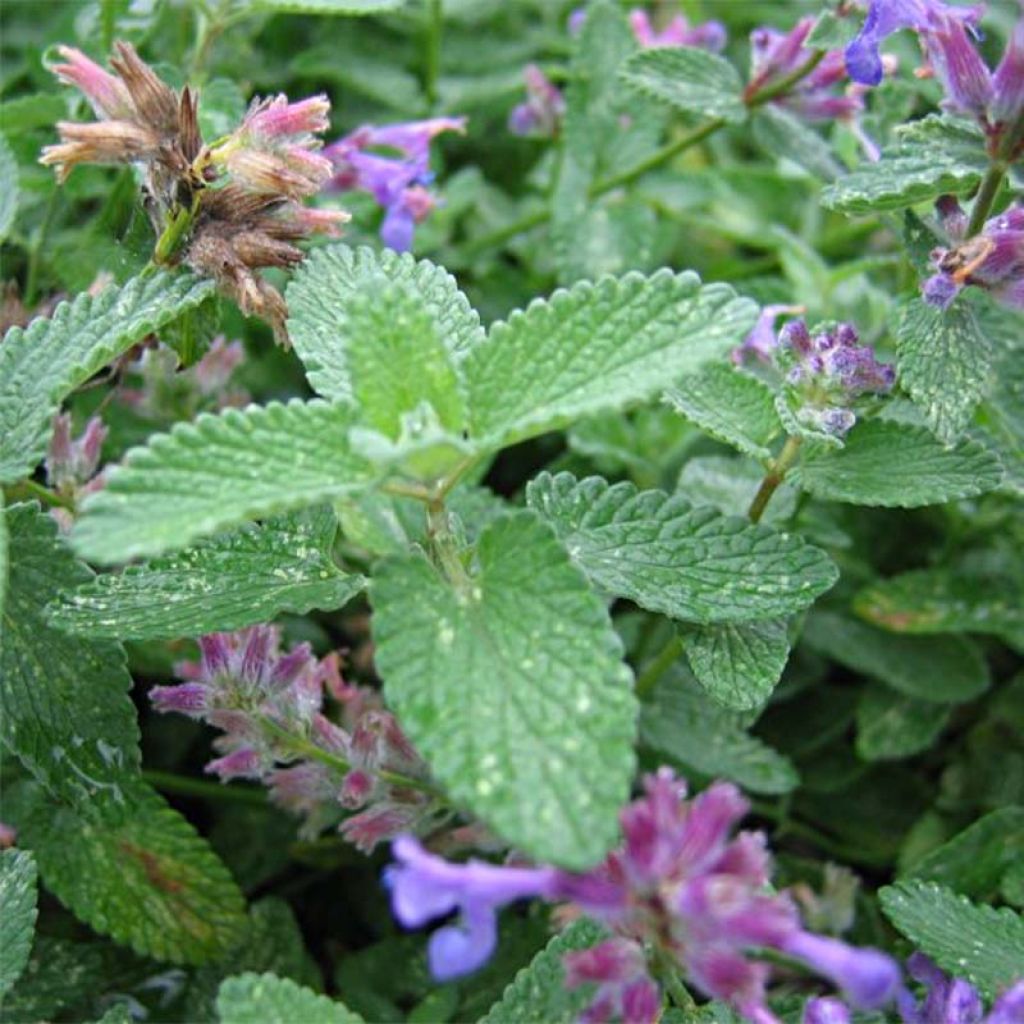

Nepeta mussini - Catnip
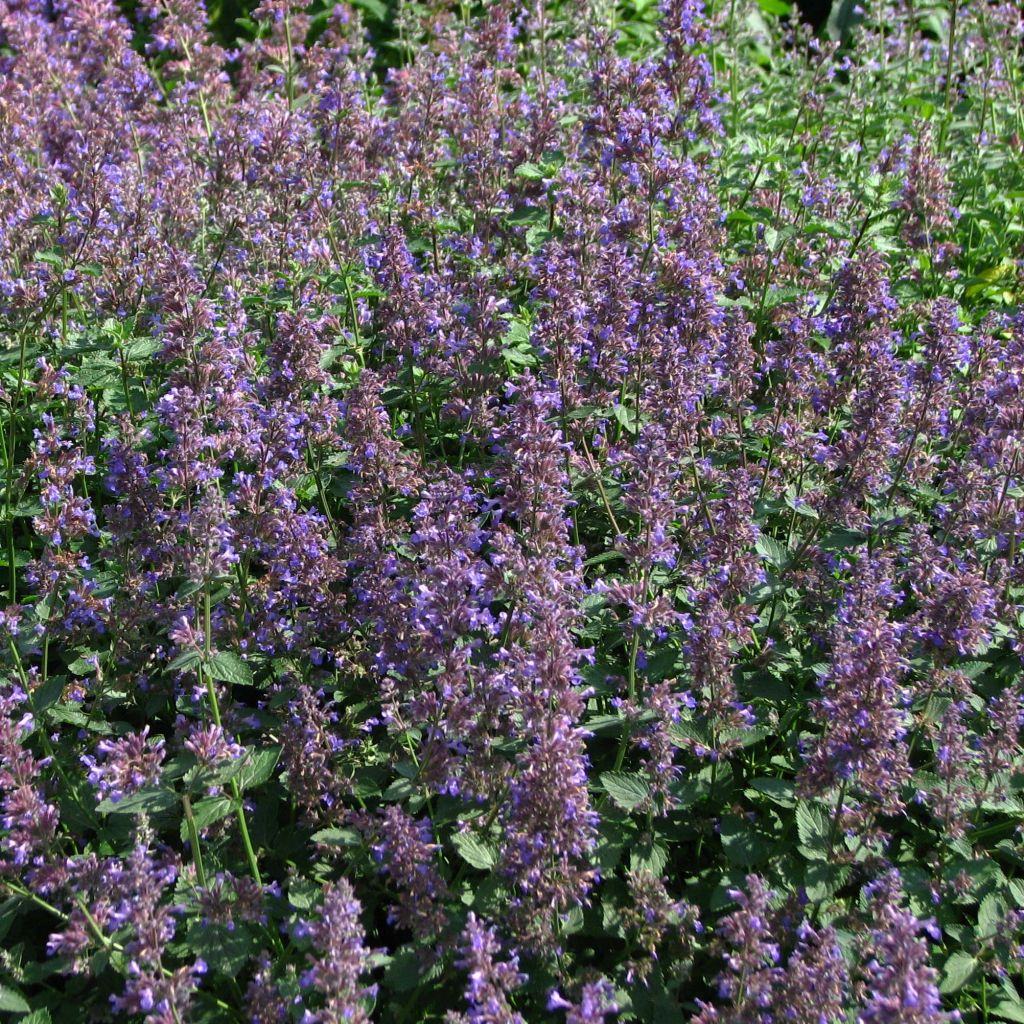

Nepeta mussini - Catnip
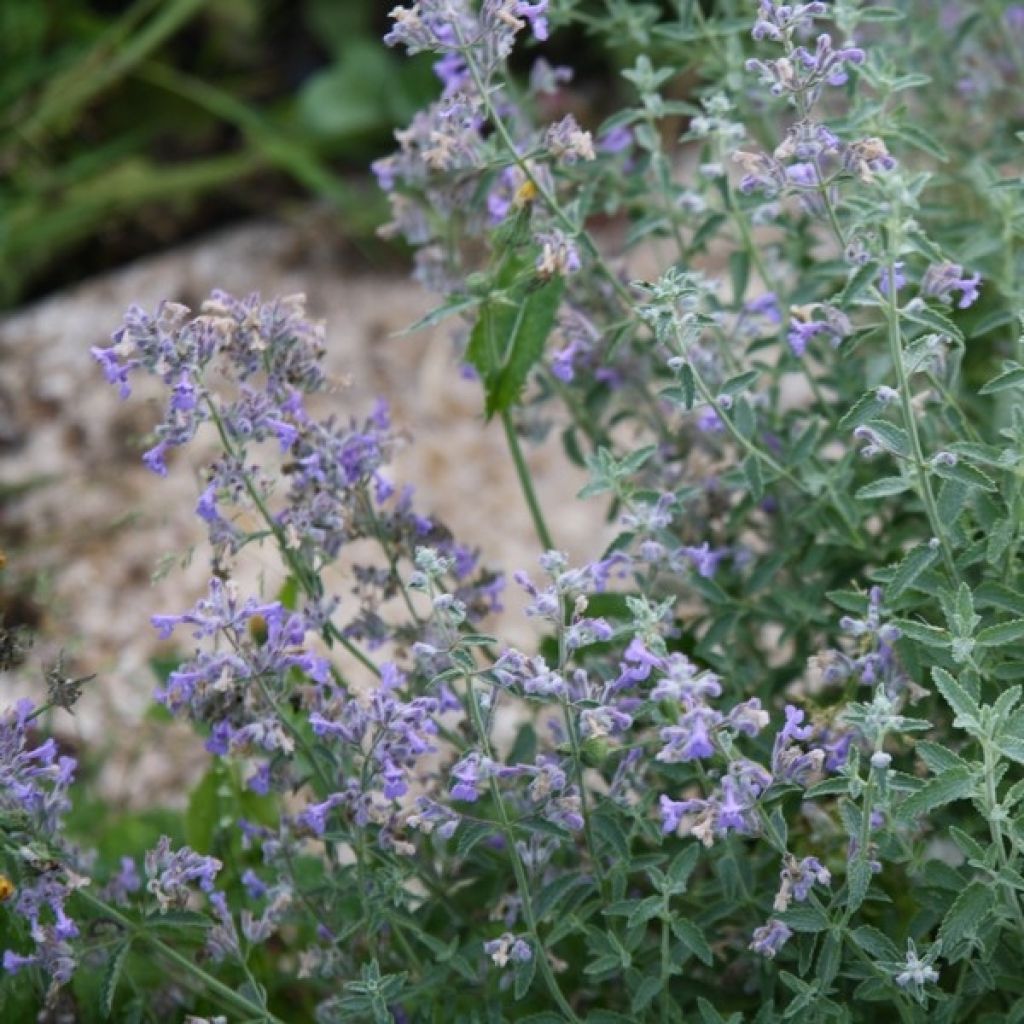

Nepeta mussini - Catnip
Nepeta mussini - Catnip
Nepeta mussini
Dwarf Catnip, Dwarf Catmint
This item cannot be shipped to the selected country
Delivery charge from €5.90
Delivery charge from €5.90
More information
Schedule delivery date,
and select date in basket
This plant carries a 12 months recovery warranty
More information
We guarantee the quality of our plants for a full growing cycle, and will replace at our expense any plant that fails to recover under normal climatic and planting conditions.
From €5.90 for pickup delivery and €6.90 for home delivery
Express home delivery from €8.90.
From €5.90 for pickup delivery and €6.90 for home delivery
Express home delivery from €8.90.
Does this plant fit my garden?
Set up your Plantfit profile →
Description
Nepeta racemosa (synonym mussini) also known as catnip or Catmint, forms a bushy, low and branched plant, with small, silver-green, ovate, aromatic leaves, which transforms throughout the summer into a bunch of blue-violet melliferous flowers. It is a deciduous to semi-evergreen creeping perennial, well adapted to drought. Its use is comparable to lavender, but easier. It is an ideal companion for roses, old or modern, and a boon for sunny rockeries and borders.
Nepeta racemosa belongs to the Lamiaceae family, just like sage, mint and thyme among other aromatic plants. It is native to the Caucasus and northern Iran, specifically regions that experience dry and hot summers and cold and humid winters. From spring onwards, it forms a dense and bushy, creeping clump, 30cm (12in) high with a spread of at least 50cm (20in). It quickly reaches its adult size. Flowering occurs from June to September-October, with a pause in July-August in dry and hot climates. The flowers, grouped in whorls on the spikes, are a bright blue-violet and measure 3cm (1in) in length. Highly nectar-rich and melliferous, they attract a large number of bees and butterflies. The silver-green foliage is velvety, and the leaves are highly aromatic when crushed. They are ovate, crenate, slightly pubescent, and measure 2 to 3cm (1in) in length. This is one of the most adaptable Nepeta species, tolerating drought well and a wide range of well-drained soils. Its leaves are also attractive to cats.
Nepeta racemosa is a remarkable garden plant that is easy to grow. It will find its place in borders, especially at the base of roses. It will be a perfect companion to yellow roses like 'Buff Beauty' or rose-orange roses like 'Westerland', hiding their bare bases while flattering their colours. In flower beds, it pairs well in the front row with stachys, valerians, Knautia macedonica, carnations (Dianthus gratianopolitanus), or perennial geraniums (Geranium cinereum, G. sanguineum), relying on a line of perennials that flower together: Canon Went toadflax, Buenos Aires verbena, and gauras. It also works well as a ground cover on embankments and in rockeries, in the company of scabiosa, skullcaps, and Santolina virens. It is beautiful above walls. It can also be grown in pots.
Fun fact: Catnip acts as a sort of drug on some cats. They start by looking up and moving their head before rubbing against the plant for several minutes. Don't worry; it is perfectly harmless to our felines!
Report an error about the product description
Nepeta mussini - Catnip in pictures
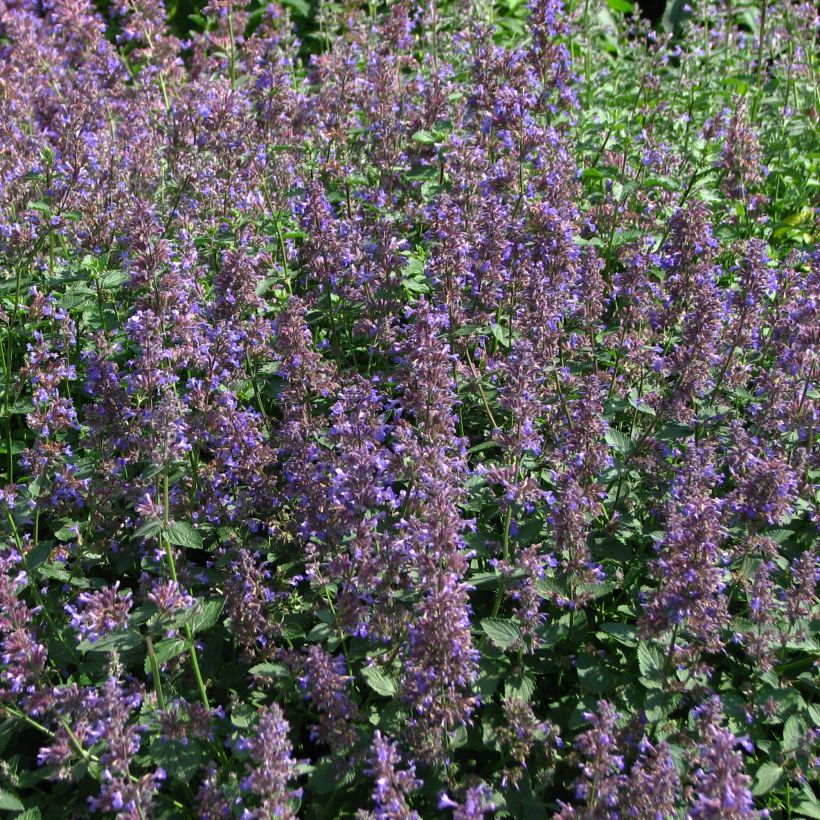

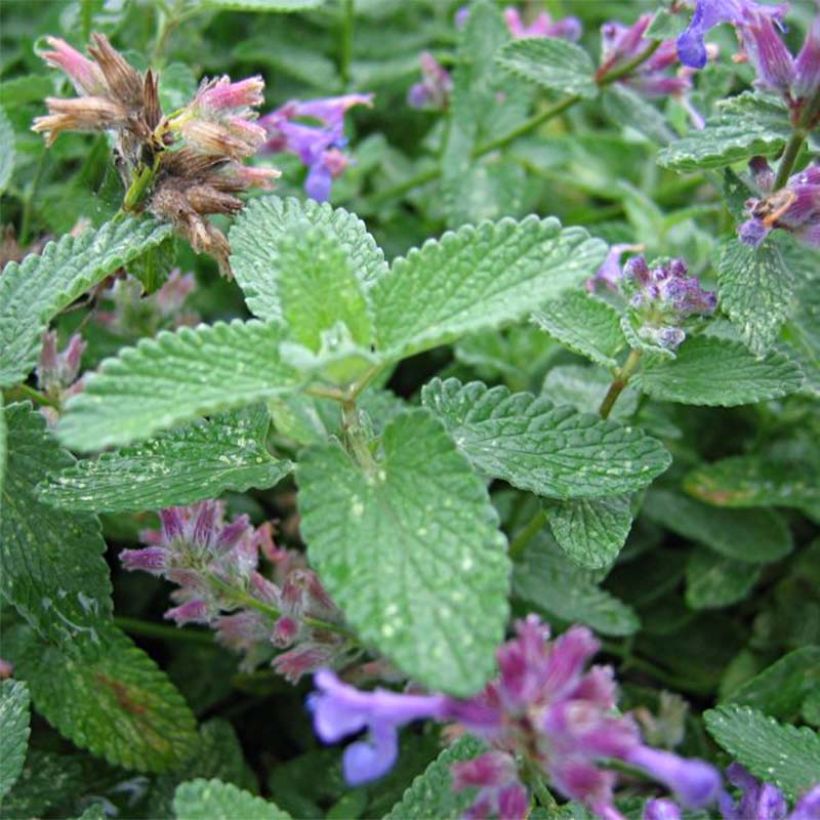

Flowering
Foliage
Plant habit
Botanical data
Nepeta
mussini
Lamiaceae
Dwarf Catnip, Dwarf Catmint
Cultivar or hybrid
Other Nepeta - Catnip
Planting and care
It grows in the sun in light, poor and rocky soils. However, it is capable of thriving in clay soils if they are properly drained and enriched with gravel. It appreciates moist soils but adapts to summer drought by reducing its flowering. In heavy soils, dig a hole 3 times larger than the volume of the plant and mix 1/3 gravel and 1/3 sand with your topsoil to lighten the soil and prevent water stagnation in winter. In the heart of summer, prune the faded inflorescences to a height of 20cm (8in) using shears. The plant will be more compact and will bloom again in autumn.
Planting period
Intended location
Care
-
, onOrder confirmed
Reply from on Promesse de fleurs
Summer flowering perennials
Haven't found what you were looking for?
Hardiness is the lowest winter temperature a plant can endure without suffering serious damage or even dying. However, hardiness is affected by location (a sheltered area, such as a patio), protection (winter cover) and soil type (hardiness is improved by well-drained soil).

Photo Sharing Terms & Conditions
In order to encourage gardeners to interact and share their experiences, Promesse de fleurs offers various media enabling content to be uploaded onto its Site - in particular via the ‘Photo sharing’ module.
The User agrees to refrain from:
- Posting any content that is illegal, prejudicial, insulting, racist, inciteful to hatred, revisionist, contrary to public decency, that infringes on privacy or on the privacy rights of third parties, in particular the publicity rights of persons and goods, intellectual property rights, or the right to privacy.
- Submitting content on behalf of a third party;
- Impersonate the identity of a third party and/or publish any personal information about a third party;
In general, the User undertakes to refrain from any unethical behaviour.
All Content (in particular text, comments, files, images, photos, videos, creative works, etc.), which may be subject to property or intellectual property rights, image or other private rights, shall remain the property of the User, subject to the limited rights granted by the terms of the licence granted by Promesse de fleurs as stated below. Users are at liberty to publish or not to publish such Content on the Site, notably via the ‘Photo Sharing’ facility, and accept that this Content shall be made public and freely accessible, notably on the Internet.
Users further acknowledge, undertake to have ,and guarantee that they hold all necessary rights and permissions to publish such material on the Site, in particular with regard to the legislation in force pertaining to any privacy, property, intellectual property, image, or contractual rights, or rights of any other nature. By publishing such Content on the Site, Users acknowledge accepting full liability as publishers of the Content within the meaning of the law, and grant Promesse de fleurs, free of charge, an inclusive, worldwide licence for the said Content for the entire duration of its publication, including all reproduction, representation, up/downloading, displaying, performing, transmission, and storage rights.
Users also grant permission for their name to be linked to the Content and accept that this link may not always be made available.
By engaging in posting material, Users consent to their Content becoming automatically accessible on the Internet, in particular on other sites and/or blogs and/or web pages of the Promesse de fleurs site, including in particular social pages and the Promesse de fleurs catalogue.
Users may secure the removal of entrusted content free of charge by issuing a simple request via our contact form.
The flowering period indicated on our website applies to countries and regions located in USDA zone 8 (France, the United Kingdom, Ireland, the Netherlands, etc.)
It will vary according to where you live:
- In zones 9 to 10 (Italy, Spain, Greece, etc.), flowering will occur about 2 to 4 weeks earlier.
- In zones 6 to 7 (Germany, Poland, Slovenia, and lower mountainous regions), flowering will be delayed by 2 to 3 weeks.
- In zone 5 (Central Europe, Scandinavia), blooming will be delayed by 3 to 5 weeks.
In temperate climates, pruning of spring-flowering shrubs (forsythia, spireas, etc.) should be done just after flowering.
Pruning of summer-flowering shrubs (Indian Lilac, Perovskia, etc.) can be done in winter or spring.
In cold regions as well as with frost-sensitive plants, avoid pruning too early when severe frosts may still occur.
The planting period indicated on our website applies to countries and regions located in USDA zone 8 (France, United Kingdom, Ireland, Netherlands).
It will vary according to where you live:
- In Mediterranean zones (Marseille, Madrid, Milan, etc.), autumn and winter are the best planting periods.
- In continental zones (Strasbourg, Munich, Vienna, etc.), delay planting by 2 to 3 weeks in spring and bring it forward by 2 to 4 weeks in autumn.
- In mountainous regions (the Alps, Pyrenees, Carpathians, etc.), it is best to plant in late spring (May-June) or late summer (August-September).
The harvesting period indicated on our website applies to countries and regions in USDA zone 8 (France, England, Ireland, the Netherlands).
In colder areas (Scandinavia, Poland, Austria...) fruit and vegetable harvests are likely to be delayed by 3-4 weeks.
In warmer areas (Italy, Spain, Greece, etc.), harvesting will probably take place earlier, depending on weather conditions.
The sowing periods indicated on our website apply to countries and regions within USDA Zone 8 (France, UK, Ireland, Netherlands).
In colder areas (Scandinavia, Poland, Austria...), delay any outdoor sowing by 3-4 weeks, or sow under glass.
In warmer climes (Italy, Spain, Greece, etc.), bring outdoor sowing forward by a few weeks.

































